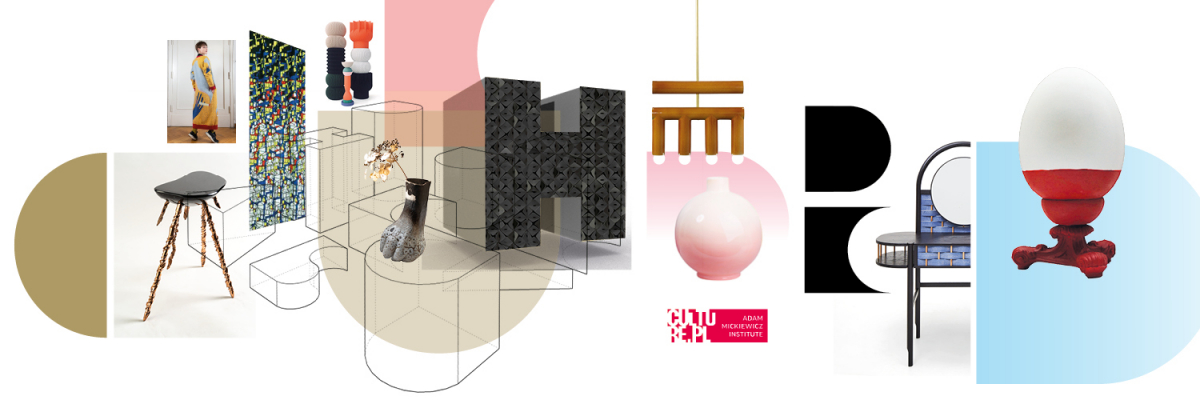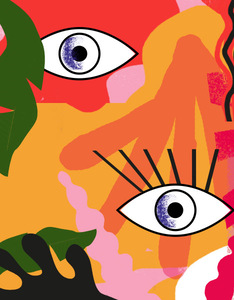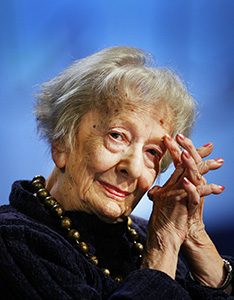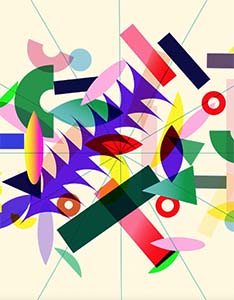Zeitgeist Polish Design Crafting a Future

The exhibition features Polish designers working in synch with the Zeitgeist, crafting their products locally, drawing on tradition and crafts.This year, the Adam Mickiewicz Institute returns to Dutch Design Week, online edition, with a new edition of Let’s Exhibit! devoted to Polish design. Curated by Paulina Matusiak, the exhibition features Polish designers working in synch with the Zeitgeist, crafting their products locally, responsibly, drawing on traditional culture and crafts.
Zeitgeist (German for “spirit of the times”) is the set of ideas and beliefs typical of a given time period. The need to solve problems through good design has always been with us. Even before people started calling their productions design. The global pandemic has ushered in a period of change. All aspects of our lives are changing. Possibilities are also emerging that we would not have seen had it not been for the pandemic. Today, it is not enough to design by modifying. We have to meet the challenges that reality throws us. This does not mean that we will stop making beautiful things. On the contrary, to cite Lidewij Edelkoort: “Creating beauty is a form of activism.”
The designer’s daring and curiosity, trusting one’s intuition, thinking of nature and of the user’s needs are all part of good design. Responsible design requires rethinking processes, materials, and waste. By using local resources and traditional techniques we tap the wisdom of many generations. By renouncing mass production and returning to the workshop we eliminate overproduction and get a sense of sustainability. We get unique products at the cusp of art and design, the distinction itself becoming increasingly blurred.
Olga Milczynska’s Kunstkamera illustrates this well. This unique collection stems from reflection on mass tourism and environmental and landscape degradation. The name refers to Baroque curiosity collections whose richness reflected a fascination with the natural world. In Splot, Beza Projekt get their inspiration from Podlasie and the region’s centuries-old fabric weaves and colors. Uauproject use PLA which can be recycled or industrially composted to make their vases. Tomasz Drózdz has translated the artistic solutions used in Ład jacquards and the Łódz jacquard style into the language of computer programming. In her Totems, Malwina Konopacka alters the function of utility items, giving them an extra dimension through artistic upcycling. Breathing new life into seemingly dilapidated objects highlights the designer’s responsibility in an age saturated with luxury goods. Calligraphic forms, strong colours, dignified materials and techniques are the hallmark of Pani Jurek’s TRN collection, a tribute to Jan Tarasin. Agnieszka Czop’s Module Carpet results from research into warp and weft. It transcends the traditional weaver’s craft, techniques, and definitions. Monika Patuszynska has chosen porcelain casting as her method. She is inspired by the flaws and unexpected features that arise in the process. NIC łódz knit all their sweaters in Łódz factories using top-quality natural fibres and recycled yarn. In his Obsee Eruption objects Mateusz Wiewiórowski goes for traditional crafts and innovation. His projects are poetic, inspired by the power of nature. It is nature, during the pandemic, that incites us to change. To start all over again.
The exhibition highlights various aspects of the design process. It presents the profiles of Polish designers, their vision and process of creation. Despite the diversity, their common denominator is design awareness attuned to the spirit of our times.
CURATED BY
PAULINA MATUSIAK
ORGANISED BY
ADAM MICKIEWICZ INSTITUTE
VISUAL IDENTIFICATION:
PAULINA MATUSIAK
COORDINATION:
NATALIA GEDROYĆ, OLGIERD ZBYCHORSKI
PRODUCTION:
MONIKA BRAUNTSCH, MARTA ŁEMPICKA
FILM EDITING:
RAFAŁ MALKO


